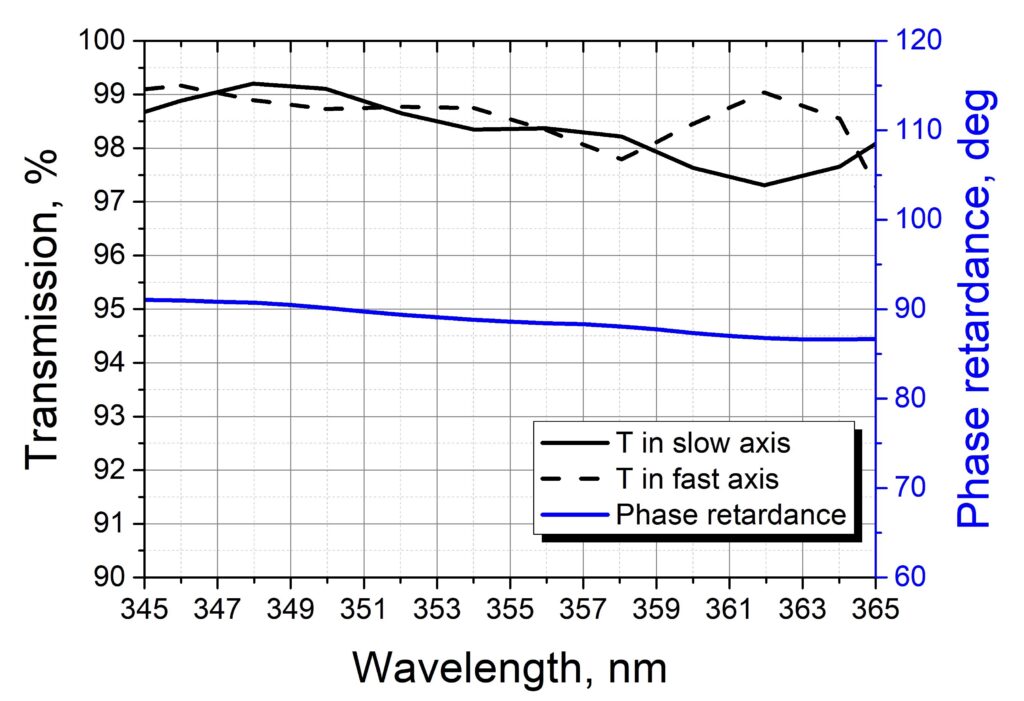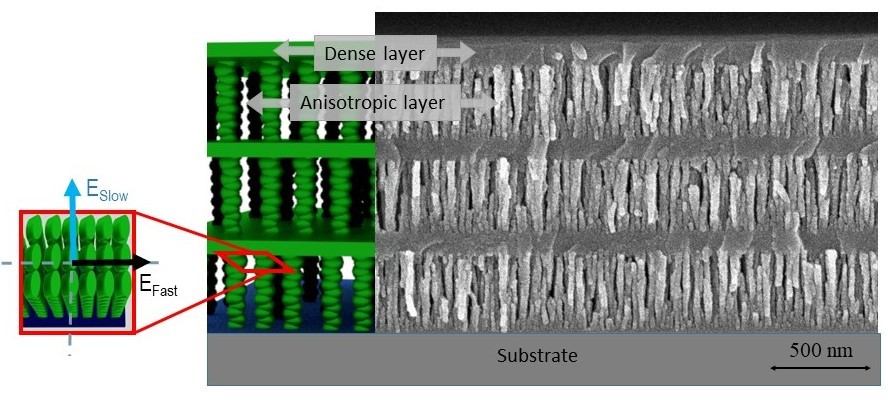TRUE ZERO-ORDER WAVEPLATES BASED ON ALL-SILICA THIN FILMS


DESCRIPTION, INNOVATION AND ADVANTAGES
The glancing angle deposition technique is employed to form nanostructured anisotropic layers by evaporating amorphous materials. Placing the substrate at an oblique angle induces the self-shadowing effect, which causes the growth of columnar nanostructures with elliptical shape cross-sections. The combination of such porous birefringent layers with comparatively small refractive index and dense isotropic thin films with higher refractive index allows forming interference coatings with required properties – high transmission or high reflection. Furthermore, due to the birefringence in anisotropic layers, the needed phase delay difference of perpendicular polarizations can be achieved to form waveplates. Low optical losses and high transparency (T~99%) can be achieved while indicating the potential to withstand high laser fluence of 40 J/cm2 in a nanosecond regime at 355 nm wavelength. Moreover, true zero-order waveplates can be produced for any wavelength in the spectral range from UV to IR. Since it is a thin film-based component, it can be coated on any surface: nonlinear crystals, mirrors, glasses etc. The aforementioned flexibility allows applying such waveplates in both – large high-power facilities and microsystems.
CURRENT STAGE OF DEVELOPMENT
Under development /laboratory tested.
INTELLECTUAL PROPERTIES RIGHTS STATUS
In-house know-how.
TYPE AND ROLE OF PARTNER SOUGHT
Industrial and (or) research institutions.
Value proposition
The glancing angle deposition technique forms nanostructured layers with high transparency and low optical losses, capable of enduring high laser fluence. This method enables the production of versatile zero-order waveplates across the UV to IR spectrum, suitable for a range of surfaces and adaptable for both large high-power facilities and microsystems.

